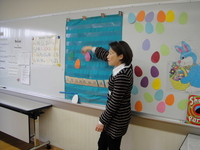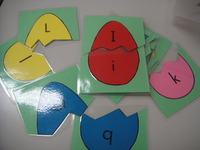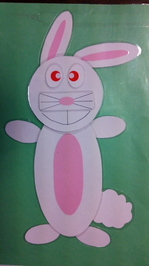 We would like to thank all of those who came to our meeting on March 3rd. It was really great to see everyone and to be able to learn together.
We would like to thank all of those who came to our meeting on March 3rd. It was really great to see everyone and to be able to learn together.
We started our meeting with an ice breaking activity, the “Fruit Basket Greeting Game”. The difference between a regular “Fruit Basket Game” and the one we did is that the “IT” players tell everyone their names and the others greet them before we go on to the game itself. Thus the room was filled with a friendly atmosphere and those who became IT more than the others got more chances to have their names known. It was a great way to get to know each other.
At the first part of our meeting, we demonstrated a full 50-minute lesson. The target students were 3rd graders who had been learning English for three months. The main purpose of the lesson was to introduce plural forms and the expression “How many markers?” The following describes how the lesson was done.
1. Warm Up Song
The students sang the song, “Seventeen Steps”. Here the students were reviewing how to say the numbers 11 to 17 in a fun way. The task of standing and sitting to the music made it even more exciting.
2. Greetings & Attendance
A leader was chosen from the students with the teacher giving several hints, such as “Today’s leader is wearing something white.” Those who matched the hints had a chance to be the leader. This short section, which takes only a few minutes, can be a very lively Listening Activity. The leader is given small tasks throughout the lesson and helps the teacher.
3. TELL
The “TELL” section is where students say things freely using the language they have already learned. This is a very important section which makes the MAT METHOD unique. The important thing is that the first words must come from the students. In other words, teachers do not ask questions or give any hints. It is recommended that this section be done in every lesson so that the students will build their confidence in USING English to express themselves.
4. Daily Expressions
Here, we did a Role Play using the expressions, “What’s your name?” “How old are you?” “Where do you live?” and “What can you do?” We first practiced it by pretending that we were in a movie theater. Next we used the situation of standing by a construction site. With small additions of context like these, students learn to start thinking of how to use the language and what to say and enjoy creating their own conversations.
5. Review
This is another important section with the MAT LESSONS. We re-use everything that has been taught and combine them together so that the students can experience how language is used. In this lesson, first we reviewed how to ask “Can you ride a bicycle?” and expanded it to “Can you ride a horse?” When the students were asked if they can draw a picture, they were asked to draw an imaginary picture in the air. Then they introduced their pictures saying “It’s a yellow circle.”
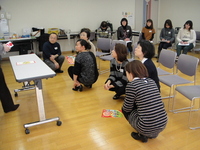 6. Main Lesson
6. Main Lesson
The aim of the lesson presented was how to teach plural forms for the first time.
Starting from reviewing the singular form, we made a contrast between singular and plural so that the students will notice the added sound “s”. In this way the students are led to discover the grammatical rule. After practicing the language with the MAT Practice System, the students learned how to ask the number of certain objects, ” How many (pencil cases)?” Then, as a learning activity, they enjoyed a memory game using the picture in the textbook.
(Picture: Learning Activity)
7. Reading &Writing
The main focus for this section was to check to see if the students could recognize the lower case letters of the Alphabet. After doing a Patty Cake activity to the Alphabet Chant, the teacher held the letter cards and asked the student, “If you hold “q” upside down what would it be?” The answer is “b”. In this way, the students were stimulated to think of the shape of each lower case letter.
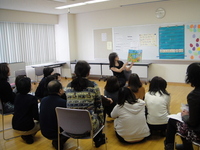 8. One Minute Review
8. One Minute Review
Using the IIEEC Reading & Writing Alphabet Chart, the students were asked questions such as, “How many yellow letters?” and reviewed the target sentence “How many~?”
After the demonstration of how to do a Full Lesson, we had fun listening to the story, “Shark in the Park” by Nick Sharratt.
(Picture: Story Telling)
With the Easter Activity Corner, we enjoyed picking up colorful plastic Easter eggs, putting the Easter Bunny body parts together, and finding the missing half of the egg cards.
We hope to see many teachers at our next meeting in June.
